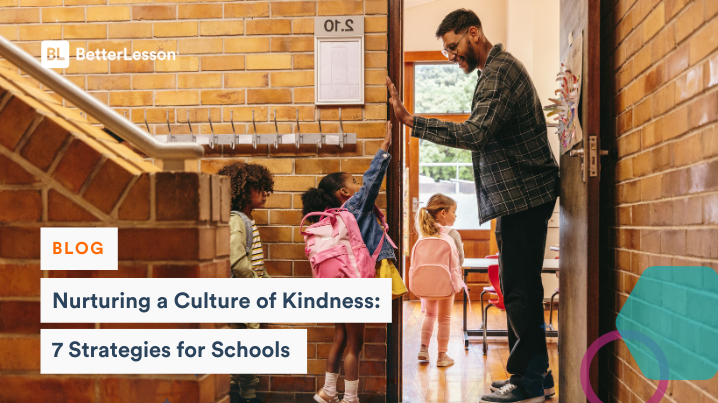October is World Mental Health Month, and for educators, this month provides an opportunity to take a step back and assess the culture of our classrooms. One way to contribute to positive mental health is by fostering kindness in our schools, and it doesn’t have to be expensive or time-consuming. We’ve compiled some strategies for teachers and school leaders to spread kindness throughout their campus.
1. Lead by Example:
Teachers and school leaders are beacons of guidance for their students. Demonstrating kindness through actions, such as genuine greetings, acts of generosity, and expressions of gratitude, sets a precedent for the entire school community. By embodying the values of kindness, educators create an environment where compassion is not just taught but lived.
2. Incorporate Social-Emotional Learning (SEL) into the Curriculum:
Integrating social-emotional learning into the curriculum equips students with the emotional intelligence necessary for navigating life’s challenges. By dedicating time to lessons on self-awareness, interpersonal skills, and responsible decision-making, educators lay the groundwork for a compassionate and understanding school culture.
3. Establish a Kindness Club:
Empower students to take an active role in spreading kindness by forming a Kindness Club. This student-led initiative can organize events, projects, and campaigns that promote compassion throughout the school. Activities like kindness challenges, appreciation notes, and collaborative projects instill a sense of ownership among students as they become ambassadors for positive change.
4. Implement Restorative Practices:
Move away from punitive measures and adopt restorative practices to address conflicts within the school community. Restorative circles and conversations provide a platform for open communication, empathy, and understanding. By fostering a culture of accountability and forgiveness, schools create an atmosphere where kindness and compassion are not only encouraged but expected.
5. Create a Supportive Staff Culture:
Extend the practice of kindness beyond student interactions to the relationships among school staff. Acknowledge and appreciate the efforts of teachers and administrators to cultivate a supportive and collaborative culture. Mentorship programs, team-building activities, and resources for stress management contribute to a work environment where everyone feels valued and supported.
6. Promote Inclusive Initiatives:
Kindness extends to embracing diversity and fostering inclusivity within the school community. Implement initiatives that celebrate differences and promote understanding. Cultural exchange programs, awareness campaigns, and inclusive policies create a school environment where every student feels accepted and valued.
7. Encourage Peer Support Programs:
Empower students to support one another through peer support programs. Training students to be empathetic listeners and providing avenues for peer mentorship create a network of support within the student body. This not only strengthens interpersonal connections but also reinforces the importance of kindness as a collective responsibility.
As we honor World Mental Health Month, let’s recognize the transformative power of kindness in shaping the well-being of individuals and the culture of a school. By intentionally integrating these strategies into daily practices, educators and school leaders contribute to a nurturing environment that prioritizes positive mental health. Let this October be a celebration of kindness, creating a school community where every member feels seen, heard, and valued.
If you want more tips and strategies to create a positive school climate and improve the mental health of the students at your school, check out our webinar, Resilient Schools: Strategies for Improving Student Mental Health








